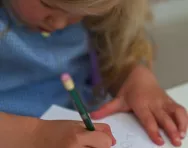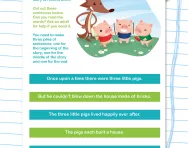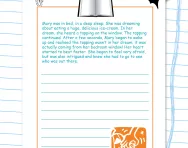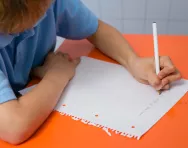Important update from TheSchoolRun
For the past 13 years, TheSchoolRun has been run by a small team of mums working from home, dedicated to providing quality educational resources to primary school parents. Unfortunately, rising supplier costs and falling revenue have made it impossible for us to continue operating, and we’ve had to make the difficult decision to close. The good news: We’ve arranged for another educational provider to take over many of our resources. These will be hosted on a new portal, where the content will be updated and expanded to support your child’s learning.
What this means for subscribers:
- Your subscription is still active, and for now, you can keep using the website as normal — just log in with your usual details to access all our articles and resources*.
- In a few months, all resources will move to the new portal. You’ll continue to have access there until your subscription ends. We’ll send you full details nearer the time.
- As a thank you for your support, we’ll also be sending you 16 primary school eBooks (worth £108.84) to download and keep.
A few changes to be aware of:
- The Learning Journey weekly email has ended, but your child’s plan will still be updated on your dashboard each Monday. Just log in to see the recommended worksheets.
- The 11+ weekly emails have now ended. We sent you all the remaining emails in the series at the end of March — please check your inbox (and spam folder) if you haven’t seen them. You can also follow the full programme here: 11+ Learning Journey.
If you have any questions, please contact us at [email protected]. Thank you for being part of our journey it’s been a privilege to support your family’s learning.
*If you need to reset your password, it will still work as usual. Please check your spam folder if the reset email doesn’t appear in your inbox.
How to encourage a reluctant writer

What happens when your child is asked to produce a page of creative writing for homework?
While some children will churn out pages and pages of stories, others act like it’s a fate worse than death, and run out of steam after a few short lines.
‘Some children are naturally talented writers, but others struggle,’ says Margaret Bateson-Hill, a children’s author, storyteller and tutor with Chelsea Young Writers. ‘The key is to help them express their ideas and unlock their creativity.’
We asked Margaret for her top tips for encouraging a reluctant writer.
Take away the physical effort
Handwriting and creativity are often closely linked, and if your child has difficulty writing neatly, fluently and quickly, they’re likely to be discouraged from putting pen to paper, no matter how good their ideas are.
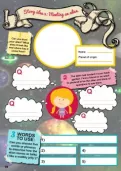
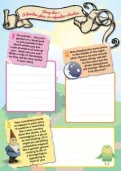
Download a FREE Creative Writing toolkit!
- KS1 & KS2 workbooks
- Bursting with fill-in prompt sheets and inspiring ideas
- Story structure tips, style guides and editing suggestions
‘I sometimes ask children to tell me what they want to write, and I scribe it for them,’ says Margaret. ‘Often, children have so many ideas but the act of writing is hard for them. You see the relief on their faces when they realise they can tell their story without having to physically write it down.’
Let them draw
Drawing can be really helpful at the planning stage to help children visualise their ideas. ‘It’s a particularly useful tool for very young children who are just beginning to write, and is also great for helping children develop their characters,’ explains Margaret. ‘Labelling their illustration will also help them come up with descriptive words that they can use in their writing.’ It’s a good idea to put a time limit on the drawing stage, though, otherwise some children will get so caught up in their picture that they won’t get round to writing.
Read aloud
Even if your child is a proficient independent reader, reading aloud can help them to understand the mechanics of a gripping story. ‘Listening to a story for enjoyment is a different experience from learning to read and teaches children lots about vocabulary, style and genre,’ says Margaret. Picture books are particularly good for this, even for older children, as the illustrations provide discussion points beyond what is said in the text.
Pick a theme
If your child is mad about computers but their homework writing task is Roman history, it’s not surprising that he feels less than inspired. As an antidote, when you’re working on writing tasks at home, choose a topic that gets them excited – whether that’s football, animals or dinosaurs. ‘Start by brainstorming the technique, writing down everything you can think of around the topic,’ Margaret advises. ‘Encourage your child to use all their senses: what would they be able to see, hear, touch, taste and smell?’
Experiment with different formats
At school, your child may need to produce two A4 sides of neat pencil writing, but at home, there’s no reason to put constraints on how they write. ‘It’s absolutely fine to use the computer – not only does this help if your child struggles with handwriting, but there are so many opportunities for playing with fonts, word art and formats,’ Margaret explains. ‘You could also try cutting out pictures from magazines and making scrapbooks, or even use one of the online printing companies to publish your child’s work in book form – a huge incentive that gives children a real buzz.’
Ban the rubber
Some children get so hung up on presentation that they spend all their time correcting mistakes and lose their creative flow. ‘I always tell children not to use a rubber, but just to put a line through anything they want to change,’ advises Margaret. ‘If you rub something out, it’s gone forever, but if you just cross it out, it’s still there if you want to come back to it. Encourage children to get their ideas down first without worrying about presentation, and then refine them.’
Read it aloud
Once your child has written their masterpiece, encourage them to read it out loud. ‘This is really important, as not only will it help children realise their own spelling and punctuation mistakes and correct them, but more importantly, it makes the story come alive,’ Margaret says. ‘The whole point of stories is that they’re for sharing.’
Above all, when you’re helping your child to write for fun, don’t mark their work. ‘When children are writing spontaneously, they won’t necessarily spell or punctuate correctly, but the process is all about experimenting with ideas – not achieving 100 per cent accuracy,’ Margaret adds.
